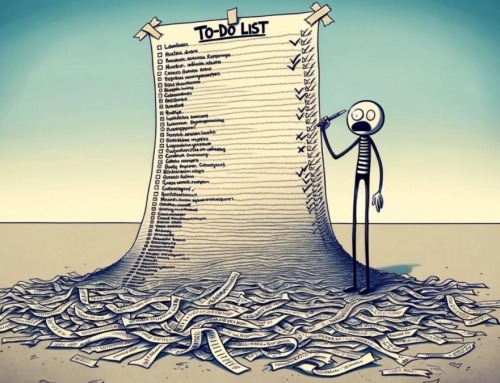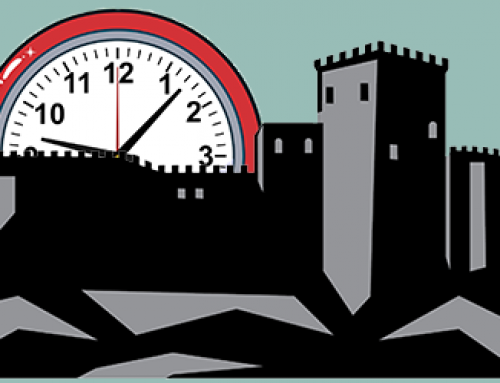The capacity of your throughput is equal to the capacity of your bottlenecks.
Your personal productivity has two aspects: capacity and throughput. You need them both, but they aren’t identical. And when it comes to effective productivity, one is more important than the other.
Your capacity
Think of capacity and throughput like this: Capacity is how much stuff WILL FIT. Throughput is how much stuff WILL FLOW.
For example, a bucket has capacity but—without a hole—it has no throughput. Room in the bucket means there’s room for more water.
Sometimes we treat our productivity solely like a bucket. We feel we can handle more work until we’re full. We think we can take on more tasks if we have white space on our calendar. The calendar shows a free hour, so we must have time for another meeting or another phone call.
Your throughput
But we’re not only like a bucket. For us, effective productivity doesn’t refer just to our capacity, it refers to our throughput. We don’t just contain work, we process it. We’re actually more like a freeway.
For example, like a bucket, a freeway can range between 0 and 100% capacity. It can be anywhere from totally empty to completely filled with traffic. At a high capacity, the freeway begins to slow and throughput declines. As a freeway approaches 100% capacity, it stops being a freeway, and becomes a parking lot. Throughput is choked off because the freeway has become a bottleneck.
Imagine being a small motorcycle merging on to a freeway at 100% capacity. You may be the smallest vehicle (It’s just a five-minute task! How could I possibly say no?) but you have no throughput because the freeway is full, and you can’t move. The task may fit, but it’s not going anywhere.

The myth of multitasking
We often fall for the myth that multitaskers have high capacity and high throughput. This isn’t true. The research on multitasking is clear: people are bad at it, it slows you down, and can actually make you stupid. The irony is that you use more energy than the sum of energy required to do each task independently. Multitaskers take in everything, overtaxing their ability to focus and complete assignments correctly.
Truth is that multitasking is actually misnamed. When you try to multitask, you aren’t actually doing two things at once—you’re rapidly switching your focus between two things. Every time you switch, you have to re-focus on the new task. Because it takes a few minutes to get up to speed on a task, these “switching costs” make multitasking extremely inefficient.
Keep it simple and single tasking
Single tasking is the opposite of multitasking, and it’s better in virtually every way. Working on one thing at a time lets you dive deeper and do a better job at each task. This way you don’t have to spread your time, attention, and energy—the three ingredients of productivity—across many things at once.
Single tasking lets you create more attentional space around your work in the moment, which lets you think deeper, make more connections, work more creatively, and find more meaning in the work.
We don’t want our freeways or our productivity gridlocked, we want flow. We want throughput. We need to control our workload. We need to divide it into manageable chunks and finish what we start. Effective productivity isn’t about how busy you are, it’s about how much you accomplish. We need to carefully limit capacity in order to maximize throughput.
See why you should try to keep your daily capacity to only three things.
See how to apply Scrum to your to-do list to get twice as much done in half the time.
Use this breakdown breakthrough to blaze through your task list today.






